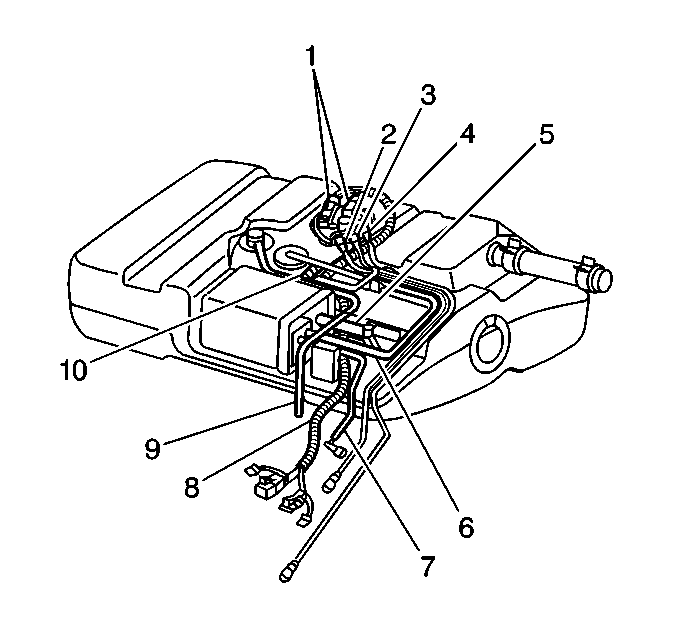Removal Procedure

Caution: Unless directed otherwise, the ignition and start switch must be in the OFF or LOCK position, and all electrical loads must be OFF before servicing
any electrical component. Disconnect the negative battery cable to prevent an electrical spark should a tool or equipment come in contact with an exposed electrical terminal. Failure to follow these precautions may result in personal injury and/or damage to
the vehicle or its components.
- Disconnect
the negative battery cable.
- Relieve the fuel system pressure. Refer to the
Fuel Pressure Relief
.
- Drain the fuel tank. Refer to
Fuel Tank Draining
.
- Raise the vehicle. Refer to
Lifting and Jacking the Vehicle
in General Information.
- Clean all the fuel pipe and hose connections and the surrounding
areas before disconnecting in order to avoid possible contamination of the
fuel system.
- Remove the fuel tank. Refer to
Fuel Tank Replacement
.
- Remove the fuel feed pipe (4) and the fuel return pipe (2) from
the fuel sender pipes.
- Remove the fuel feed and return pipes from the fuel tank.
- Cap the fuel pipes in order to prevent possible fuel system contamination.
Installation Procedure

- Remove the caps from the
fuel pipes.
- Connect the fuel feed pipe (4) and the fuel return pipe (2) to
the fuel sender pipes.
- Install the fuel feed and return pipes into the fuel tank clips.
- Install the fuel tank. Refer to
Fuel Tank Replacement
.
- Lower the vehicle.
- Refill the fuel tank.
- Connect the negative battery cable.
- Tighten the fuel filler cap.
- Inspect for leaks.
| 9.1. | Turn ON the ignition for 2 seconds. |
| 9.2. | Turn OFF the ignition for 10 seconds. |
| 9.3. | Turn ON the ignition. |
| 9.4. | Inspect for fuel leaks. |
- Perform the idle learn procedure. Refer to
Idle Learn
.


